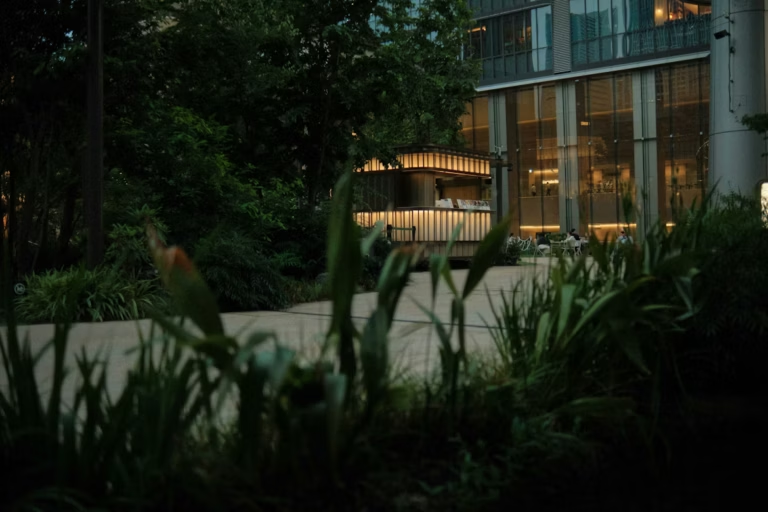Security risk assessments are playing a bigger role than ever in Western Australia. Councils are now requesting them as part of development applications, government agencies expect them before funding major projects, and organisations across education, mining, local government and infrastructure are using them to manage real risks — not just to tick a compliance box. In a state as geographically large and operationally diverse as WA, a well-executed security risk assessment provides clarity, protects people, and helps decision-makers invest in the right controls at the right time.
Unlike generic safety checklists or a quick security quote from a vendor, a security risk assessment is a structured and independent examination of threats, vulnerabilities and consequences. It considers people, physical environments, technology, procedures, and how all of these elements interact. When aligned with ISO 31000:2018 — the international risk management standard — it becomes a defensible document that can be used for council approvals, insurance purposes, internal governance or board-level reporting.
What a Security Risk Assessment Actually Is
At its core, a security risk assessment answers four key questions:
- What are we trying to protect?
- What could go wrong?
- How likely is it, and what would the impact be?
- What do we need to do about it?
It involves identifying assets such as people, buildings, equipment, research laboratories, public spaces or operational systems. From there, potential threats are evaluated — theft, vandalism, violence, vehicle intrusion, protest activity, unauthorised access, remote area incidents or insider threats. These risks are then analysed using likelihood and consequence to determine the level of risk. Finally, the assessment recommends treatment options — which may include CPTED measures, technology, policies, training or procedural changes.
What makes this process valuable is not just identifying the risks — it’s providing clear, prioritised actions that help councils, business owners, universities or developers make informed decisions.
Why It Matters in Western Australia
Western Australia has its own risk profile that cannot be compared to the eastern states. Metropolitan Perth faces challenges like public space safety, anti-social behaviour, event security and urban development pressures. Regional and remote WA, on the other hand, must consider isolated facilities, longer emergency response times, the protection of mining infrastructure and safety of FIFO accommodation.
Local governments such as the City of Perth, Town of Victoria Park, City of Cockburn and others are increasingly asking for security risk assessments or CPTED reports before approving developments. DevelopmentWA, in particular, often includes security conditions that require independent assessments aligned with recognised standards.
There is also a growing expectation from insurers, procurement teams and community stakeholders that organisations actively assess and manage risks — not only after an incident but during planning, design and operations.
Who Needs Security Risk Assessments in WA
Security risk assessments are commonly required or requested by a wide range of organisations across Western Australia, including:
- Local governments and councils – for public spaces, civic buildings, recreation centres, libraries, car parks, laneways and events.
- Developers and architects – particularly when lodging development applications that trigger security-related planning conditions.
- Mining and resource companies – to manage risks at remote sites, processing facilities, fuel storage, high-value assets and FIFO accommodation.
- Universities, schools and TAFEs – where laboratories, student accommodation, research facilities or high-traffic public areas require risk-based security planning.
- Utilities and essential services – such as water treatment plants, power infrastructure, transport nodes and communications facilities.
- Commercial property owners and shopping centres – especially where incidents, anti-social behaviour or insurance requirements drive the need for risk assessments.
In many cases, the assessment is not only best practice — it’s required to satisfy planning authorities, insurers, auditors or internal governance frameworks.
How the Process Works (ISO 31000 in Practice)
The most credible security risk assessments in Western Australia are structured around ISO 31000:2018. This framework ensures the assessment is logical, defendable and based on a widely accepted methodology. Here’s how it’s typically applied:
Establish the context
This includes understanding the site, location, operations, stakeholders, existing controls, and local risk environment. In WA, this may involve crime data, local council planning conditions, remote operations or local environmental factors.
Identify threats and vulnerabilities
This is where potential security issues are documented — from unauthorised access and theft to aggression, protest, vehicle intrusion, remote site isolation or procedural weaknesses.
Analyse and evaluate risk
Each risk is given a likelihood and consequence rating. This creates a risk matrix that helps organisations visually understand which issues require immediate attention and which can be monitored.
Recommend treatments
This could include CPTED upgrades, access control improvements, CCTV changes, policies for key management, after-hours procedures, duress response, event planning, or staff training.
Residual risk and action plan
Recommendations are prioritised into short-, medium- and long-term actions. The final report provides a roadmap that organisations can implement over time.
Common Security Issues Seen Across WA
Across metropolitan and regional Western Australia, there are recurring patterns identified in many assessments. These include:
- Poor lighting, blind spots and overgrown vegetation in parks, laneways or car parks.
- Uncontrolled access to sensitive areas in public buildings or campuses.
- CCTV systems with inadequate coverage or outdated technology.
- No formal incident reporting or escalation procedures.
- Staff or contractors bypassing access procedures due to convenience.
- Remote sites with limited communications or delayed police response.
- Vehicle access risks around pedestrian zones or events.
These issues don’t always require expensive technology to fix. Often, low-cost changes to layout, signage, maintenance, procedures or staff awareness can significantly reduce risk.
Security Risk Assessment vs CPTED — What’s the Difference?
This is a common question in WA, especially when preparing development applications. While security risk assessments and CPTED assessments often overlap, they are fundamentally different in purpose and scope.
A security risk assessment focuses on identifying threats, analysing their likelihood and impact, and proposing risk treatments. It includes physical security, procedures, technology and sometimes emergency planning.
A CPTED assessment (Crime Prevention Through Environmental Design) focuses on how the built environment influences behaviour. It assesses natural surveillance, territorial reinforcement, lighting, sightlines, access control, wayfinding and how space is used.
In simple terms — CPTED is about designing spaces to discourage crime and improve safety. Security risk assessments are about understanding risks and putting practical controls in place. Many WA councils require both.
What You Receive in a Professional Security Risk Assessment
A well-prepared security risk assessment in Western Australia isn’t a generic template — it’s a tailored document that reflects the unique environment, operational context and threats of the site being assessed. A comprehensive report typically includes:
- Executive summary – outlining key risks, priority recommendations and overall findings.
- Site description and context – including location, purpose, current security measures and environmental considerations.
- Risk methodology – confirming that ISO 31000:2018 has been applied, which adds credibility for councils, auditors and insurers.
- Threat and vulnerability analysis – clear explanation of where risks exist and why.
- Risk register and matrix – listing each risk with likelihood, consequence and overall rating.
- Actionable recommendations – organised by priority (e.g. immediate, medium-term, long-term).
- Supporting evidence – site photos, maps, diagrams or observation notes.
- Optional briefing or presentation – many organisations request a walkthrough of the findings for executives, council members or project teams.
This report becomes a useful working document. It can support funding applications, project planning, council approvals, internal governance reporting or procurement of new security systems.
Why Local Expertise Matters in WA
Commissioning a consultant who understands Western Australian conditions makes a substantial difference to the quality and relevance of the assessment. WA has unique challenges that interstate or template-based assessments often overlook.
Local expertise provides value through:
- Understanding of WA council planning conditions and DevelopmentWA requirements.
- Knowledge of regional challenges like police response delays, remote workforce risks and cyclone-prone areas in the north.
- Familiarity with standards commonly applied in WA such as ISO 31000, AS 3745 (emergency planning), ISO 22341 (CPTED), AS/NZS 1158 (lighting) and local CPTED planning policies.
- Awareness of how WA organisations really operate — universities, local governments, mining villages, community facilities and critical infrastructure all operate differently.
- Independence from security vendors or installers — essential when the goal is objective advice rather than selling equipment.
Choosing a WA-based consultant means faster site visits, realistic recommendations and a report that holds weight with local authorities and stakeholders.
Final Thoughts
Security risk assessments are becoming a fundamental part of responsible planning and asset management in Western Australia. Whether required by council, requested by insurers or initiated by leadership teams, they provide clarity, reduce risk and support safer outcomes for staff, visitors and the wider community.
The most effective assessments are those based on ISO 31000, tailored to the local context and supported by practical, achievable recommendations — not generic advice. In a state as diverse as Western Australia, one-size-fits-all approaches simply don’t work.
If you’re planning a development, managing a public space, overseeing infrastructure or need expert advice for your organisation, a professionally prepared security risk assessment can make decision-making clearer and more defensible.
Want Support or Advice?
If you’d like guidance or a proposal tailored to your site or project, you can get in touch via our Contact page. We’re based in Western Australia and specialise in independent, standards-based security risk assessments for government, education, development, infrastructure and commercial clients.



